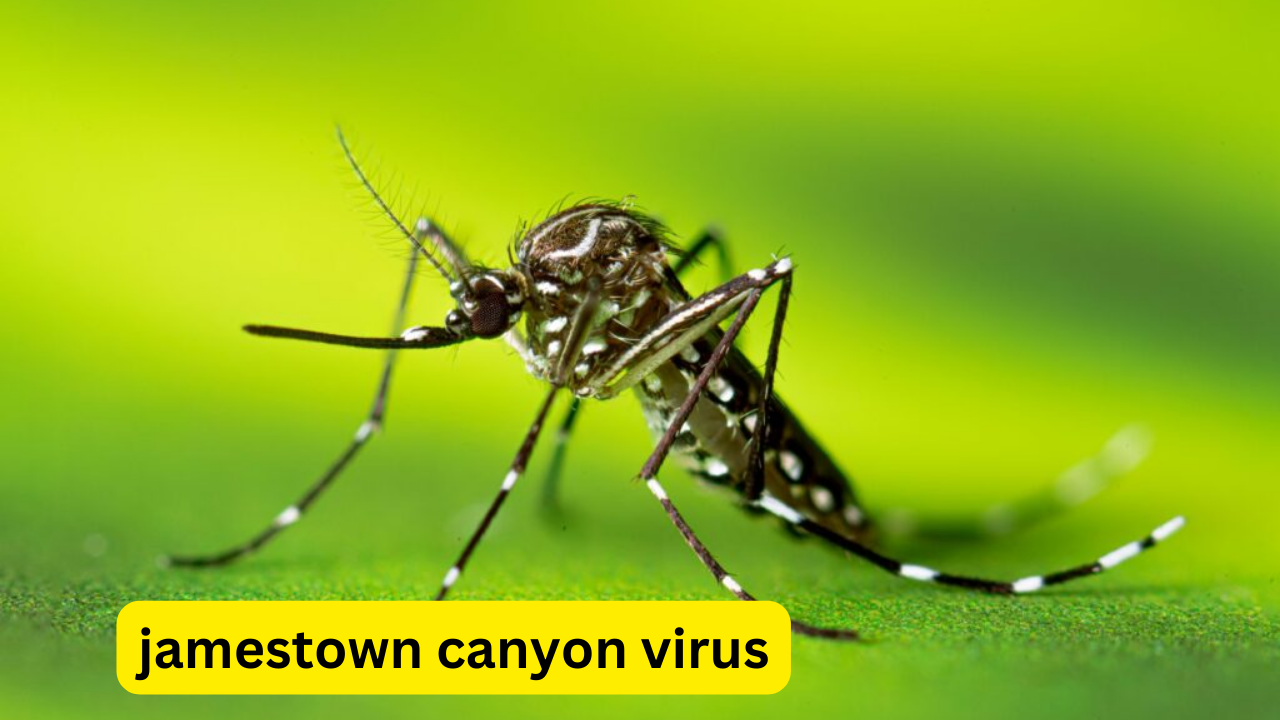The Jamestown Canyon Virus (JCV) is an emerging vector-borne pathogen in North America. First identified in the 1960s in Jamestown Canyon, Colorado, this virus belongs to the Bunyaviridae family and is primarily transmitted through the bites of infected mosquitoes. Despite being relatively rare, the virus poses significant health risks, particularly as climate change alters mosquito habitats and increases human exposure.
Transmission and Life Cycle
Mosquito Vectors
JCV is primarily spread by Aedes and Culex mosquitoes, which are common in North America. These mosquitoes become infected after biting mammals, particularly deer, which serve as the primary reservoirs for the virus. Once infected, mosquitoes can transmit the virus to humans and other animals during subsequent bites.
Human Infection
Human infection with JCV usually occurs in late spring through early fall when mosquito activity is at its peak. The virus is introduced into the bloodstream through the mosquito’s saliva, initiating the infection process. While most people bitten by an infected mosquito do not develop symptoms, some may experience a range of mild to severe health effects.
Symptoms and Clinical Manifestations
Mild Symptoms
Many individuals infected with JCV remain asymptomatic. However, those who develop symptoms may experience:
- Fever
- Headache
- Fatigue
- Muscle aches
Severe Symptoms
In more severe cases, JCV can lead to serious neurological conditions such as meningitis and encephalitis. Symptoms of these severe manifestations include:
- Severe headache
- Stiff neck
- Confusion
- Seizures
- Loss of coordination
Risk Factors
Certain groups are at higher risk for severe JCV infection, including:
- Individuals with weakened immune systems
- Elderly people
- Those living or working in areas with high mosquito activity
Diagnosis and Treatment
Diagnostic Methods
Diagnosing JCV can be challenging due to its non-specific symptoms. Medical professionals rely on a combination of methods, including:
- Patient history and symptom assessment
- Laboratory tests such as serological assays to detect antibodies against JCV
- PCR (Polymerase Chain Reaction) tests to identify viral RNA in blood or cerebrospinal fluid
Treatment Options
There is currently no specific antiviral treatment for JCV. Management focuses on supportive care, which may include:
- Hydration
- Pain relievers
- Hospitalization for severe cases requiring intensive medical care
Prevention and Control
Personal Protective Measures
Preventing JCV infection involves minimizing exposure to mosquito bites. Effective strategies include:
- Using insect repellent containing DEET, picaridin, or oil of lemon eucalyptus
- Wearing long sleeves and pants when outdoors
- Using mosquito nets and screens to protect sleeping areas
Environmental Control
Reducing mosquito populations around homes and communities is crucial. Methods include:
- Eliminating standing water where mosquitoes breed
- Maintaining swimming pools
- Using larvicides in water sources that cannot be drained
Epidemiology and Public Health Impact
Geographic Distribution
JCV has been detected across the United States and Canada, with higher prevalence in the Midwestern and Northeastern states. The geographic range is expanding, potentially due to climate change and alterations in mosquito habitats.
Public Health Surveillance
Ongoing surveillance and research are vital for understanding JCV and preventing outbreaks. Public health authorities focus on:
- Monitoring mosquito populations
- Tracking human cases
- Conducting public awareness campaigns
Research and Future Directions
Vaccine Development
Currently, there is no vaccine for JCV. However, research is ongoing to develop vaccines and antiviral therapies that can prevent and treat JCV infections. This includes studying the virus’s genetic makeup and its interactions with the human immune system.
Climate Change Impact
Climate change is expected to influence the spread of JCV by altering mosquito habitats and extending the breeding season. Understanding these dynamics is essential for developing effective public health strategies to combat the virus.
Innovative Technologies
Advancements in genetic engineering and biotechnology offer new possibilities for controlling mosquito populations and preventing the spread of JCV. These include genetically modified mosquitoes that are less capable of transmitting viruses.
Conclusion
The Jamestown Canyon Virus is an emerging public health concern with potential for serious health impacts. Understanding its transmission, symptoms, and prevention measures is critical for minimizing the risk of infection. As research continues, public health strategies must adapt to changing environmental conditions and technological advancements to effectively combat this virus.
